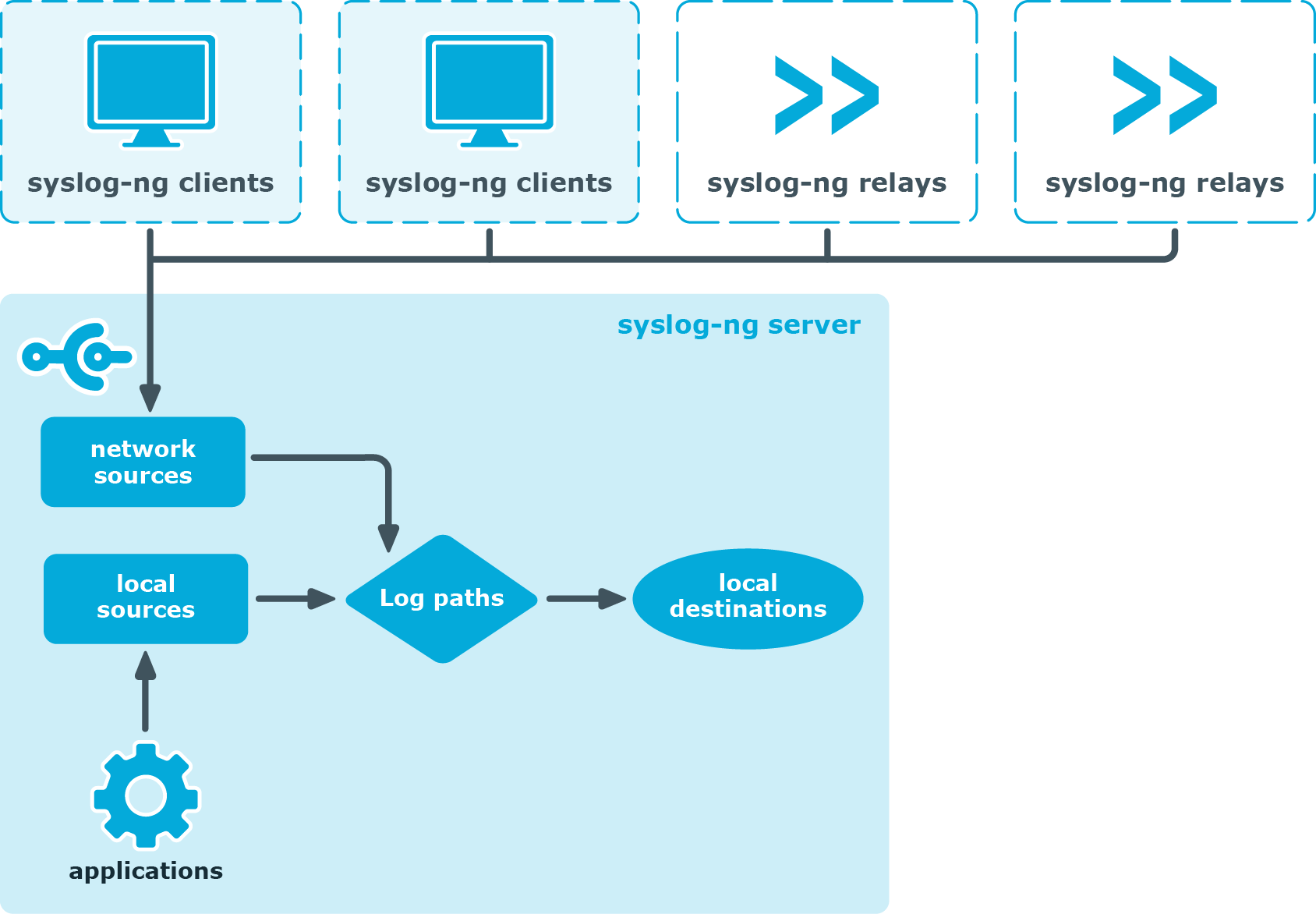Figure 4: Server-mode operation

In server mode, syslog-ng acts as a central log-collecting server. It receives messages from syslog-ng clients and relays over the network, and stores them locally in files, or passes them to other applications, for example, log analyzers.

